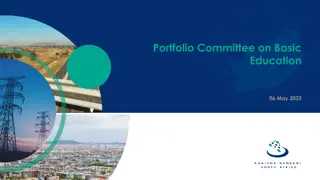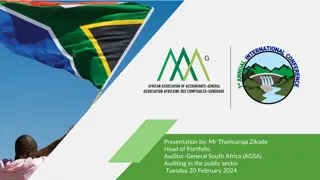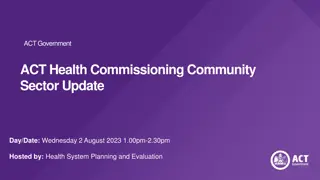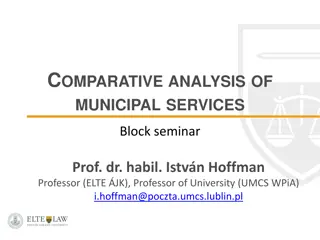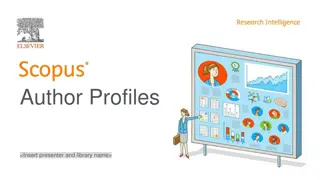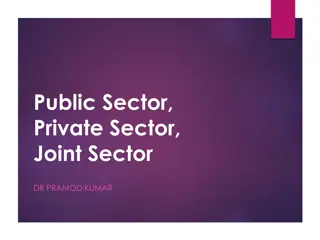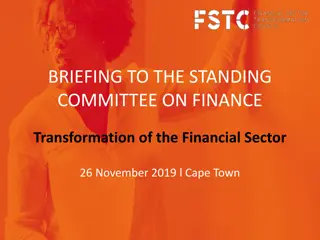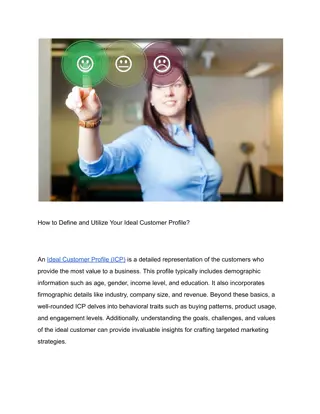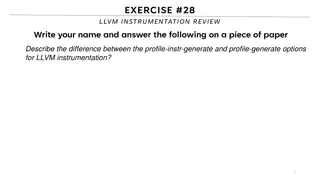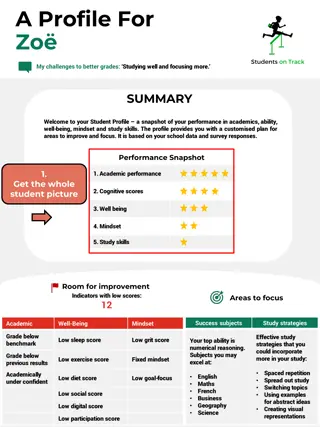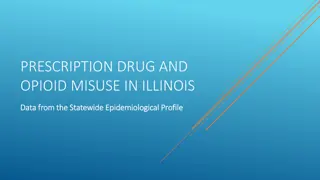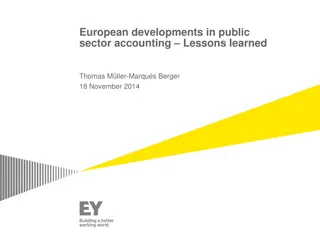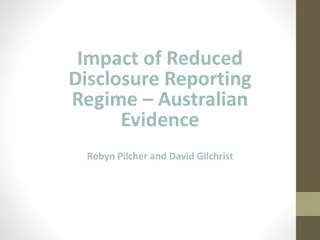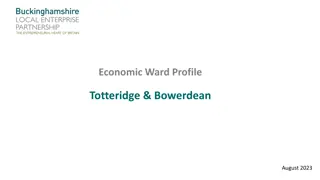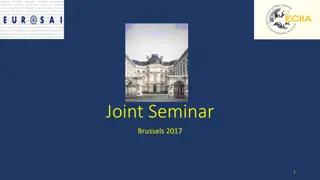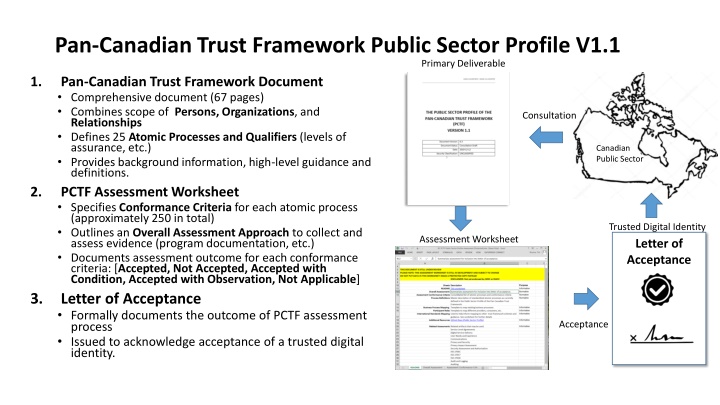
Pan-Canadian Trust Framework Public Sector Profile Assessment Process
"Explore the comprehensive Pan-Canadian Trust Framework (PCTF) assessment process for the public sector, covering phases, resourcing, key milestones, and future steps. Learn about the assessments conducted to date and the implications for trusted digital identities."
Download Presentation

Please find below an Image/Link to download the presentation.
The content on the website is provided AS IS for your information and personal use only. It may not be sold, licensed, or shared on other websites without obtaining consent from the author. If you encounter any issues during the download, it is possible that the publisher has removed the file from their server.
You are allowed to download the files provided on this website for personal or commercial use, subject to the condition that they are used lawfully. All files are the property of their respective owners.
The content on the website is provided AS IS for your information and personal use only. It may not be sold, licensed, or shared on other websites without obtaining consent from the author.
E N D
Presentation Transcript
Pan-Canadian Trust Framework Public Sector Profile V1.1 Primary Deliverable 1. Pan-Canadian Trust Framework Document Comprehensive document (67 pages) Combines scope of Persons, Organizations, and Relationships Defines 25 Atomic Processes and Qualifiers (levels of assurance, etc.) Provides background information, high-level guidance and definitions. PCTF Assessment Worksheet Specifies Conformance Criteria for each atomic process (approximately 250 in total) Outlines an Overall Assessment Approach to collect and assess evidence (program documentation, etc.) Documents assessment outcome for each conformance criteria: [Accepted, Not Accepted, Accepted with Condition, Accepted with Observation, Not Applicable] Letter of Acceptance Formally documents the outcome of PCTF assessment process Issued to acknowledge acceptance of a trusted digital identity. Consultation Canadian Public Sector 2. Trusted Digital Identity Assessment Worksheet Letter of Acceptance 3. Acceptance
Overview of PCTF Public Sector Profile Assessment Process Assessment process is conducted in four phases over two fiscal quarters Resourcing during phases requires 3.0 FTE *- 2.0 FTE*for dedicated analysis + part-time 1.0 FTE for consultation and assistance. Program Assessment Finalize Engagement Program Mapping Team Formation Evidence Gathering Peer Review Discovery Overall Assessment Letter of Acceptance Kick-off Consultation & Workshops Process Mapping Criteria Assessment Analysis Site Visit (If Possible) Approval Process Q1 Start Q2 Estimated Duration: 2 fiscal quarters (approximately 6 months) Estimated Effort: Q1: (2.0 FTE x 100% + 4.0 FTE x 25% = 3.0 FTE) Q2:(2.0 FTE x 100%+ 10.0 FTE x 10% = 3.0 FTE ) Image result for government of canada logo white * FTE is full-time-equivalent
PCTF Public Sector Profile Assessments: Conducted to Date Province of Alberta April-August 2018 Initial Assessment September 2018: Letter of Acceptance Issued August 2019: Go-Live on My Service Canada Account January 2019: Quarterly Review Province of British Columbia August-December 2019 Initial Assessment Q1 2020: Letter of Acceptance Issued (Est.) Q1 2020: Go-Live on My Service Canada Account and My CRA Login (Est.) Q2 2020: Quarterly Review (Est.) Rest of Canada 2020-202X (Est.)
PCTF Public Sector Profile: Key Milestones and Next Steps 1. Pan-Canadian Trust Framework Consultation Draft Version 1.1 PCTF Working Group Consultation Draft was finalized on February 13th, 2020 Planned release on GitHub for broader consultation and review (March 2020). Seeking IMSC endorsement at next meeting on April 1st, 2020 2. PCTF Assessment Worksheet Consolidation all Conformance Criteria for each atomic process (approximately 250 in total) Integration of Verified Organization Conformance Criteria (may be a separate worksheet) Continued refinement and validation of Conformance Criteria 3. PCTF Assessment and Mutual Recognition Continued iteration of PTCF assessment processes into a a formalized program. Exploring alignment with other frameworks (eIDAS, Digital Nations, etc.)
PCTF Public Sector Profile: Lessons Learned 1. Requires collaborative team effort with experts on the ground. Kick-off involved in-person visit to i) gain direct knowledge of program and ii) establish close working relationship between team members. Regular calls (and videoconferencing) between teams. Gathered and compiled evidence using conformance criteria templates submitted for assessment. Assessment is a discrete work stream, however tightly coupled to other work streams (technical integration, MOU, agreements etc.) Engage legal counsel early in the process, as there will be implications for agreements and authorities. Assessment process is iterative and continuously improving. Applying best practices from other frameworks (e.g., security assessment and authorization) Development of master spreadsheet to assess evidence against conformance criteria with traceability to policy requirements. Evidence collected in separate documents and filed for subsequent analysis, review and audit. Final review results in a Letter of Acceptance. Next Steps: PCTF is evolving for fit and purpose (we are defining the state of the art ) Continue to clarify distinction of responsibilities between departments and jurisdictions. Identifying dependences with processes in existing programs (e.g. vital statistics, motor vehicle licensing) and other jurisdictions (e.g., federal immigration). Maintain focus of PCTF as a business process integrity framework that complements (not replaces) existing technical interoperability standards and frameworks (e.g., SAML, Open ID Connect, Verifiable Credentials). PCTF also complements existing assessment processes or agreements (e.g., Privacy Impact Assessment, Security Assessment and Authorization, SOC2 Trust Principles). Ensure PCTF is alignment with global frameworks, World Bank, European Union, Financial Action Task Force (customer due diligence) 2. 3.

